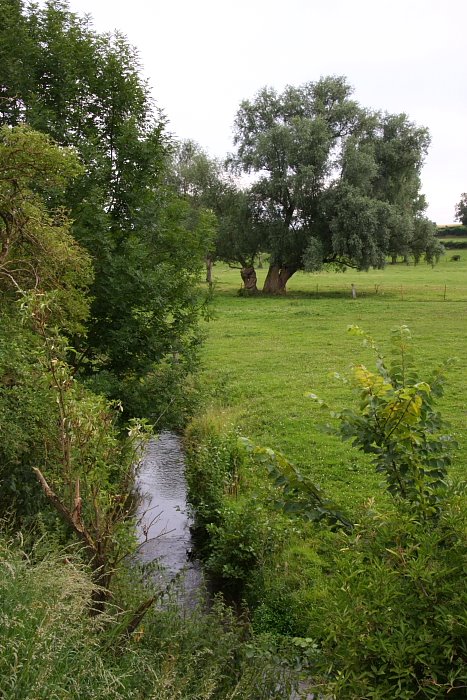
CLICK THE IMAGE FOR BIGGER VIEW
.
Calvin and Hobbes, named for a theologian and a philosopher, was one of my favorite cartoons, as I'm sure it was for many people, given that over 30 million of his books have been sold, according to Wikipedia, if that source can be trusted. (If you are not one of the 30 million people who has already purchased at least one of his books, well, what are you waiting for... go to Amazon.com, type Calvin & Hobbes, and get out your credit card...) Bill Watterson had a real genius for re-living childhood through adult eyes, and his cartoons are pure pleasure.
.
And being as slow as I am, I also only just discovered today that Bill Watterson came from a tiny town named Chagrin Falls, Ohio. Now for you astute lovers of trivial pursuits out there, you may remember that Chagrin Falls also figures in one of Stephen King's books, I won't say which one, and that a character named Owen also appears in another of his books. Although I never met Bill Watterson, nor Stephen King (got a letter once from him though) this was of interest to me because my Aunt Judy and Uncle Ed lived in Chagrin Falls for many years, and I visited them there on one or two occasions. To what lengths we will go to associate ourselves with anything famous...
.
For many years I worked almost exclusively with black and white film, before finally breaking down and allowing that color also has an important role in photography, and in life in general. Which explains why of all the Calvin and Hobbes cartoons I ever saw, this one is in a league all by itself. The debate between black and white versus color photography was an important one to some folks, Ansel Adams, for example was a purist for black and white film, while Eliot Porter on the other hand was a strong advocate for color, and a pioneer in working with color in the printing process. Both display sheer artistic genius in their results.
.
One other trivia note, which shows again how wide a following Calvin and Hobbes had; some of their images appeared on t-shirts associated with the Grateful Dead and their music which were sold outside concerts in the parking lot marketplace that sprang up at every Grateful Dead show... One Calvin and Hobbes shirt had the quote from a Dead song, "One man gathers what another man spills" on it.






























































































